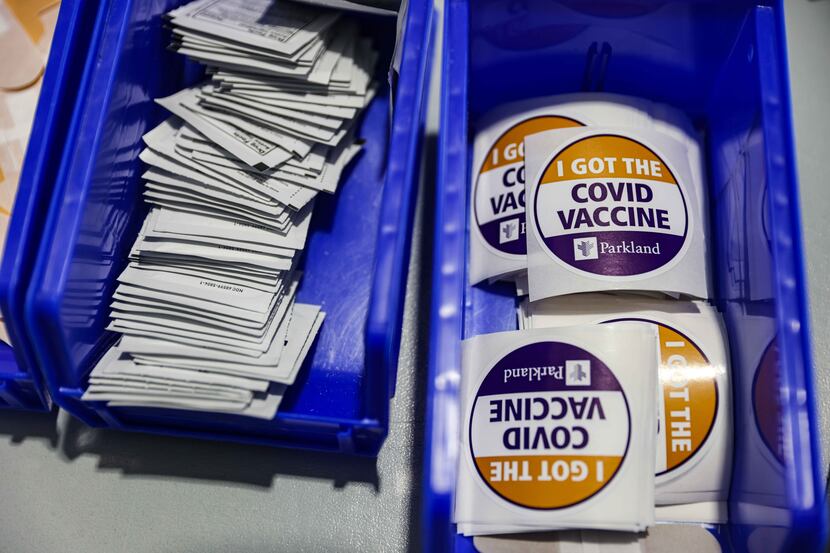More than 95% of Dallas County residents need to be protected against COVID-19 for the county to benefit from herd immunity, according to a new estimate from the Parkland Center for Clinical Innovation.
The updated estimate was included in a peer-reviewed article authored by several of the center’s researchers and published this month by the New England Journal of Medicine’s media outlet. Researchers tracked and analyzed detailed COVID-19 data since the start of the pandemic.
The new herd immunity estimate doesn’t include an exact number, but the portion of the population that needs to be protected against the virus is estimated to be in the high 90s, and could even be as high as 98% or 99%, said Steve Miff, the center’s president and CEO.
“All indications are that to start to see a measurable impact for immunity, we’ll need to get to the upper 90s,” he said.
The Dallas-based center is a nonprofit organization that works to find solutions to problems in health care using data analytics. The center works closely with Parkland Health and Hospital System and focuses on the needs of North Texas.
The estimate for herd immunity — the condition in which a population is indirectly protected from infection because vaccinations and previous exposure limit a disease’s spread — has changed throughout the course of the pandemic.
The center previously said that the county would reach herd immunity once 80% of residents were protected. But the highly contagious delta variant of the virus altered that estimate shortly after Dallas County hit that benchmark in early July.
“Any time you have a new dominant variant, you have to go back to the drawing board and reassess everything,” Miff said.
The updated estimate is based both on local data and on how the virus spread in other parts of the world. In the U.K. and Israel, for example, transmission of the virus has tampered off among age groups with 90% or more people protected against COVID-19, Miff said.
In Dallas County, some older residents are approaching the upper 90s threshold. But the overall progress is slow going, he said.
About 76% of the county is currently protected against COVID-19, either through vaccinations or natural immunity, Miff said.
In recent weeks, about 20,000 new individuals have been getting their shot each week, he said. That means with vaccinations, the county is only increasing toward the herd immunity goal at a rate of less than 1% each week.
“We still have a ways to go,” Miff said. “As a community, we remain very vulnerable to the virus.”
While vaccines protect against severe illness and death, they don’t stop people from passing the virus on to other people. That means even if the county reaches the new herd immunity threshold, transmission will still continue.
But Miff said keeping track of herd immunity progress remains important because it helps epidemiologists and hospital systems predict how the virus impact the community.
For the general public, herd immunity progress is important because the closer the population is to the threshold, the lower the risk of serious illness is for those that are still vulnerable to the virus — children under 12 who can’t get a shot yet, for example.
Health experts say that the proportion of cases occurring in younger individuals — age groups that were previously thought to be at a lower risk of serious COVID-19 illness — has been increasing. The average age of hospitalizations has gone down, and health officials recently reported record numbers of children with COVID-19 in intensive care units.
In Dallas County, children under 18 made up about 15% of all cases in June, when the delta variant wasn’t as large of concern. Currently, they account for about 28% of all new cases, Miff said.
“Our numbers indicate that we still have a quarter of the population who is very vulnerable, and remains very vulnerable to the virus,” he said. “We’ve all seen what delta does to those that don’t have immunity, that aren’t vaccinated. Folks should pay attention to vaccinations and should pay attention to their own behavior to protect themselves as we get through this thing.”

